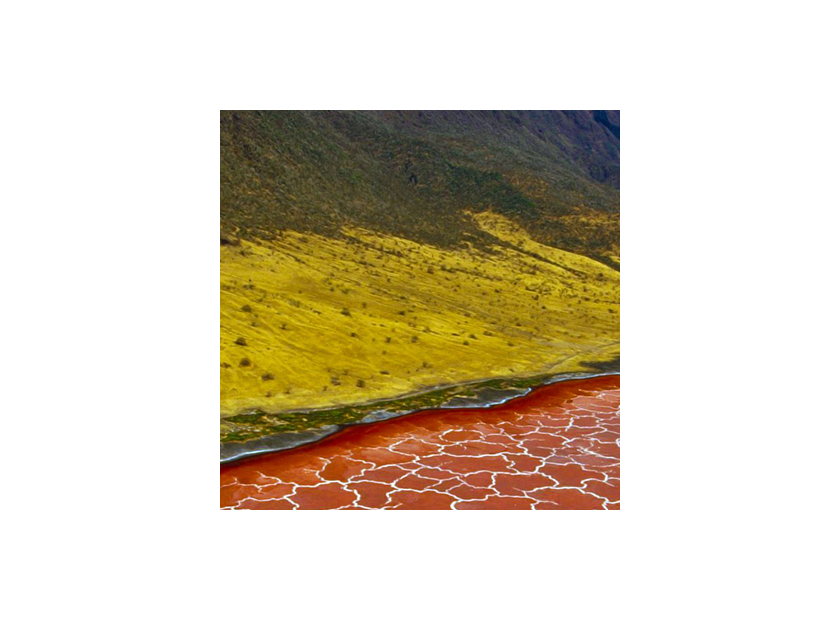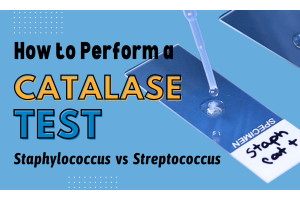Natural Wonders: Lake Natron, a happy place!
Lake Natron is a vast body of water, 57 kilometers (35 mi) long and 22 kilometers (14 mi) wide, in the Great Rift Valley of Eastern Africa right along the Northern border of Tanzania and Kenya. Located at the base of the volcano Ol Doinyo Lengai, you will first notice the deep red hue of its water, and a water face that appears to be tiled, caused by a thick coat of salt at the surface. Lake Natron is not exactly your ideal vacation spot. In fact, it’s more of a natural phenomenon. With water temperature reaching as high as 106°F, and a pH level of 10.5 (just below that of ammonia at 11), this natural alkaline lake is nothing short of inhospitable. But as microbiologists, we know that things are not always as they seem.
You might have caught a glimpse of one of the haunting photos that circulated in 2013 by English photographer Nick Brandt. In this series, calcified animals that washed up on Lake Natron’s shores were placed in lifelike positions, as they might have been in their living state. These photos sparked a huge media push and a good amount of publicity for Lake Natron and Tanzanian wildlife. As I scrolled through the articles and photos, I began to create a scene in my head of what this area must be like. My imagery included dark skies and the untimely demise of small fuzzy wildlife creatures. But as I dug further past the headlines and images, I found that Lake Natron is actually a highly productive biological eco-system, despite nature’s best efforts to keep it isolated.
photographer Nick Brandt. In this series, calcified animals that washed up on Lake Natron’s shores were placed in lifelike positions, as they might have been in their living state. These photos sparked a huge media push and a good amount of publicity for Lake Natron and Tanzanian wildlife. As I scrolled through the articles and photos, I began to create a scene in my head of what this area must be like. My imagery included dark skies and the untimely demise of small fuzzy wildlife creatures. But as I dug further past the headlines and images, I found that Lake Natron is actually a highly productive biological eco-system, despite nature’s best efforts to keep it isolated.
Due to its location at the base of a volcano and high rates of evaporation, Lake Natron has  high amounts of, you guessed it, natron. Natron is a mineral salt, consisting of hydrated sodium carbonate and is found in the soda lakes of East Africa. These high levels of natron create an environment that is rich in sodium and minerals, ideal for halophilic Cyanobacteria, specifically, Arthrospira fusiformis or Spirulina. This photosynthetic extremophile is a gram negative and non-toxic bacterium that thrives in the high alkalinity of the water and provides food for many different forms of life that take solace in the hostile waters of the African soda lakes. Otherwise referred to as blue-green algae, Spirulina is rich in protein, vitamins, minerals, carotenoids, and antioxidants that can prevent damage to cells. This halophilic bacteria grows naturally in high alkaline lakes rich in minerals. Large amounts can be found growing in Lake Texcoco in Mexico, and all along the Great Rift Valley in East Africa.
high amounts of, you guessed it, natron. Natron is a mineral salt, consisting of hydrated sodium carbonate and is found in the soda lakes of East Africa. These high levels of natron create an environment that is rich in sodium and minerals, ideal for halophilic Cyanobacteria, specifically, Arthrospira fusiformis or Spirulina. This photosynthetic extremophile is a gram negative and non-toxic bacterium that thrives in the high alkalinity of the water and provides food for many different forms of life that take solace in the hostile waters of the African soda lakes. Otherwise referred to as blue-green algae, Spirulina is rich in protein, vitamins, minerals, carotenoids, and antioxidants that can prevent damage to cells. This halophilic bacteria grows naturally in high alkaline lakes rich in minerals. Large amounts can be found growing in Lake Texcoco in Mexico, and all along the Great Rift Valley in East Africa.
There are several life forms that have decided to shack up in the cozy shelter of the lake, one of them being the fish Alcolapia Grahamia. Part of the Cichlidae family, this species of tilapia has evolved to withstand water temperatures up to 111°F, a pH of 5-11, and can survive with very low oxygen levels. Spirulina also acts as an important dietary staple for the birds that gather at the edge of this great lake and snack on the blue green algae. In fact, Lake Natron is the world’s largest breeding ground for the lesser flamingo, estimating 2.5 million flamingos flocking to its waters every year! This species has found a safe haven on the small isolated islands within the lake, and are able to live and breed within the protective boundaries of the alkaline waters.
of this great lake and snack on the blue green algae. In fact, Lake Natron is the world’s largest breeding ground for the lesser flamingo, estimating 2.5 million flamingos flocking to its waters every year! This species has found a safe haven on the small isolated islands within the lake, and are able to live and breed within the protective boundaries of the alkaline waters.
To close with a timeless cliché, things are not always as they seem. Even with harsh environmental circumstances, Lake Natron continues to foster a multifaceted eco-system that is sustained and teeming with life, making this African alkaline lake a biological phenomenon and a true reminder that nature will always find a way.
Citations:
M.D. Guiry in Guiry, M.D. & Guiry, G.M. 2017. AlgaeBase. World-wide electronic publication, National University of Ireland, Galway. http://www.algaebase.org; searched on 07 August 2017.
Yakimov M, Giuliano L, Chernikova T, Gentile G, Abraham W, Lünsdorf H, Timmis K, Golyshin P. Int J Syst Evol Microbiol 51(6):2133-2143 doi:10.1099/00207713-51-6-2133
Wood, Chris M., Paul Wilson, Harold L. Bergman, Annie N. Bergman, Pierre Laurent, George Otiang'a-Owiti, and Patrick J. Walsh. "Obligatory urea production and the cost of living in the Magadi Tilapia revealed by acclimation to reduced salinity and alkalinity." Physiological and Biochemical Zoology 75 (2002): 111-22. ISI Web of Knowledge.
Ekkehard Vareschi, Oecologia, Vol. 37, No. 3 (1979), pp. 321-335
Vonshak, A. 1997, “Spirulina platensis (Arthrospira) Physiology, cell-biology and biotechnology, ix







